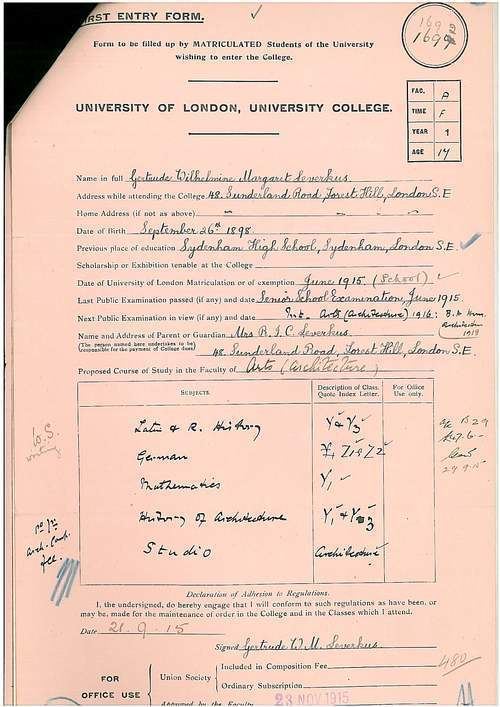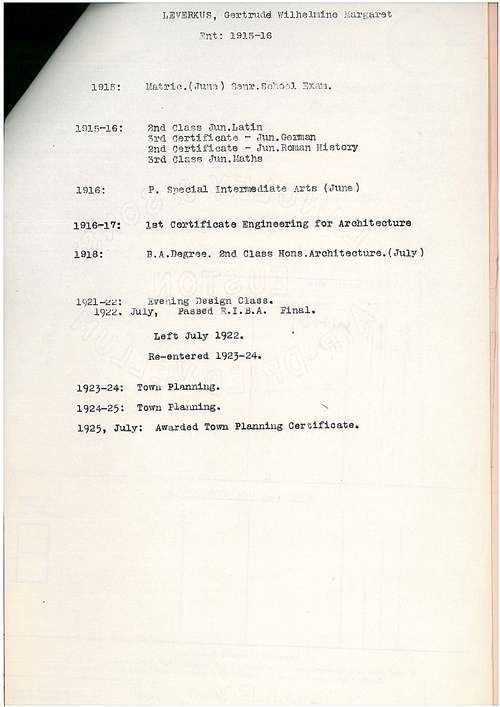Died 1976 (aged 76–77) Nationality German, British | Occupation Architect Name Gertrude Leverkus | |
 | ||
Alma mater | ||
Gertrude Leverkus (1899–1976) was a German-British architect.
Contents

Early life and education
Gertrude Leverkus was born on 26 September 1898 in Oldenburg, Germany.
Career
In 1923, Leverkus was hired by the Women's Pioneer Housing Limited to convert its properties into flats for women. One of these projects was the conversion of 31 Gledhow Gardens, also known as the Gunter Estate, in Earls Court into flats to house women workers.
In 1930 she moved into a flat she converted from the former ballroom of one Women's Pioneer property, 65 Harrington Gardens in Earl's Court, and remained a tenant of the association until her retirement.
She designed an extension of the Annie McCall Maternity Hospital in Clapham in 1938 to create an outpatients department; the hospital is now a grade II listed building.
During World War II, Leverkus left private practice to work as an inspector of stately homes to use for the war effort and as an organiser of evacuees from London. From 1943 to 1948, she worked as a housing architect for the West Ham Town Planning Office. From 1948 until her retirement in 1960, she worked for Norman and Dawbarn Architects. During this period, she designed a shopping parade and flats at Swiss Cottage tube station and worked on the new towns in both Crawley and Harlow.
Leverkus was a member of numerous women's groups, and established the women's committee of the RIBA in 1932. She served as the committee secretary in the late 1930s and was also involved in the Women's Provisional Club, the Women's Voluntary Service, and the International Federation of Business and Professional Women.
Later life
After retiring from architectural practice in 1960, Leverkus served as governor of the Brixton School of Building. She died in 1976.
